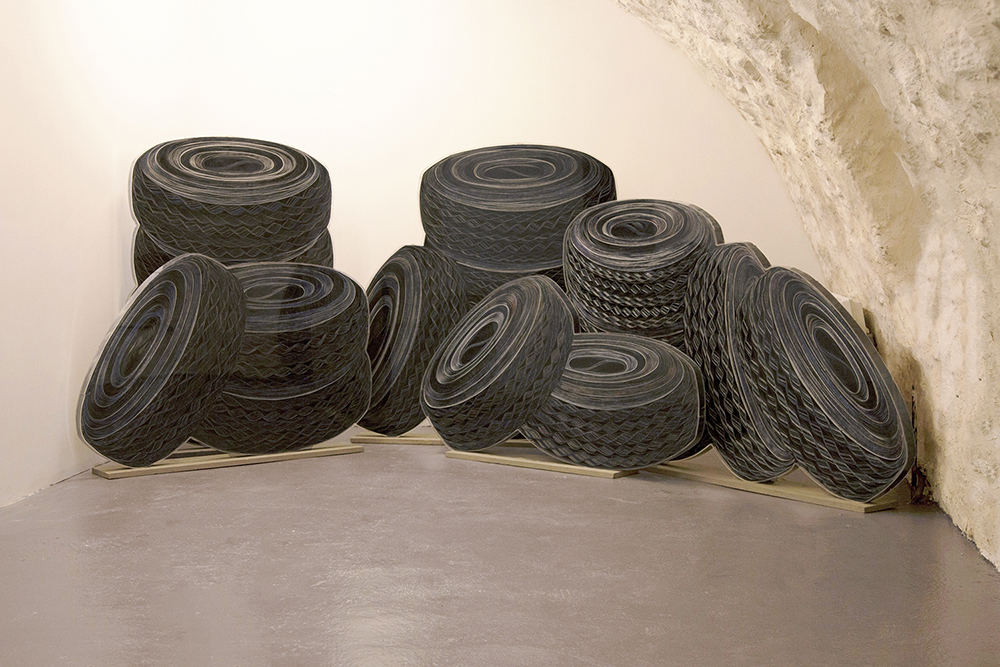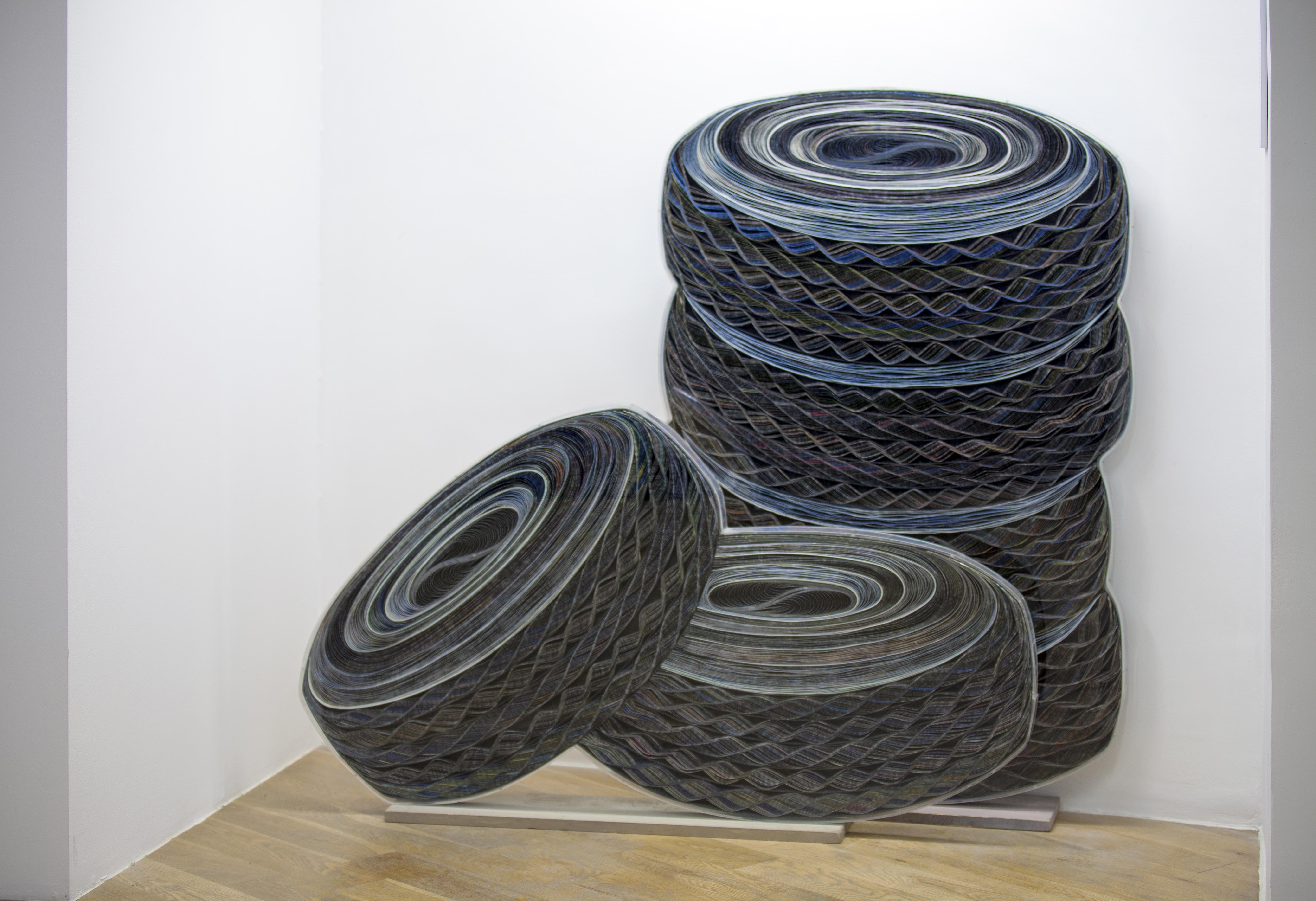It was at the beginning of the 1960s, “in the face of the abstract logorrhea that took hold of the painting”, that Pavlos decides to move towards an “objective” material, paper. The artist “cuts [the printed paper], twists it, but never creases it”, at the contrary, it is sometimes constrained by the movement dictated by the material. It was from 1966 that he began to suggest in his works the structures everyday objects. “Underlining the similarity of the rhythms of the poster strips trimmed and with an implicit design, he organizes their distribution on the canvas until make the movement of the paper coincide with the image of real-world objects. “. In these works there is no human figure, however, the man is very present “through the objects represented”. Glass, bottle, cup, jacket, shirt… As many everyday objects. Those that use shapes and that the imprint of their brand owner. Pavlos takes, in everyday life, objects with poetic resonance, to illustrate the time passing by. This time is evoked by the accumulation of objects, such as tires. Thus, Pavlos evokes with everyday objects the human condition and the cycle of life.




